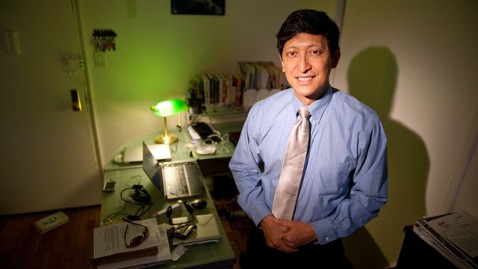Apartment Rents Rise, Vacancies Plunge

(Image credit: Nancy Borowick)
On June 1, Dan Nainan's landlord informed him that at the end of August his rent would be increasing by more than 28 percent. A five-year resident of his one-bedroom apartment located in a prime spot in New York City, Nainan's rent is set to rise to $2,700 from $2,100 in less than three months.
"I was really upset. I was in shock because I have been here for five years," said Nainan. "I'm a great tenant. I don't have loud parties or make noise. I'm a model tenant and I'm gone a lot. I don't have any pets."
Across the country, rental prices have begun to spike as vacancy rates reach a low not seen in a decade, according to Reis, which tracks commercial real estate performance.
Nationwide, vacancy rates have fallen below 5 percent to 4.7 percent in the second quarter of 2012, a low that hasn't been seen since 2001.
"For most markets, once vacancies tighten below 5 percent, effective rents tend to spike as landlords perceive that tight market conditions afford them greater pricing power over tenants. With overall vacancy below this level, it appears that rents are beginning to accelerate," according to Reis senior economist Ryan Severino.
In the U.S., the average price for effective rent rose by 1.3 percent to $1,041. New York City had the highest increase in the second quarter after average rents rose 1.7 percent to $2,935.
For Nainan, who lives in Chelsea, the hike is 15 times the average increase, and he has already begun looking for a new place.
"I understand the landlord part of it-it's market forces," said Nainan. "If I don't want it, someone else will. It's very much a landlords' market. It's definitely not a renter's market."
A feeling many renters across the country may be experiencing. After New York, apartment renters in Fort Lauderdale, Seattle, San Francisco and Nashville saw the highest effective rent growth.
New York's second quarter vacancy rate of 2.2 percent makes it one of the tightest markets for finding a rental apartment. A few other areas experiencing low vacancies include Portland, Ore., Minneapolis, New Haven, Conn., and San Jose, which round out the top five.
According to Severino, "vacancy has not been this low since the wake of the dot-com boom more than a decade ago and there is a paucity of available units."
He continued, "as the market tightens and vacancy reaches very low levels, landlords shift their strategy for growing revenue vacancy decline to accelerating rent increases," which is what is currently happening.
With his landlord politely taking a take it or leave it approach, Nainan says he is actively looking for a new apartment of the double digit percentage hike.
"I don't think the market can support that. I'm resolved not to pay it just on principle," said Nainan.
The reasons for higher rents include an exodus of people from houses and condos that were foreclosed during the real estate meltdown and tighter lending standards that have locked more buyers out of the market.